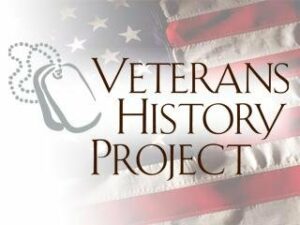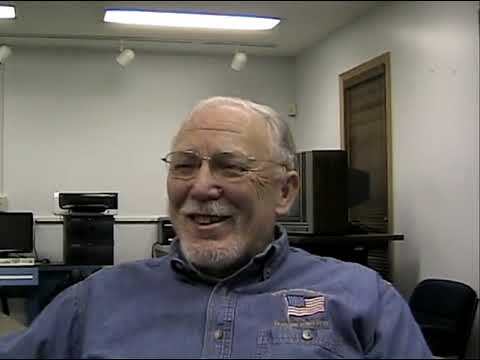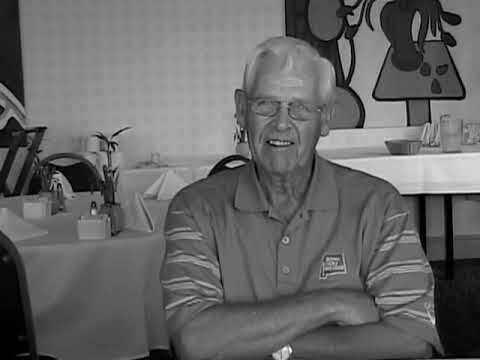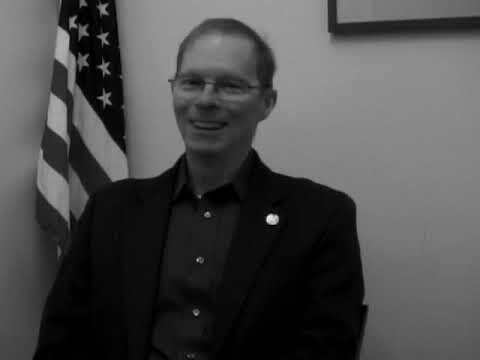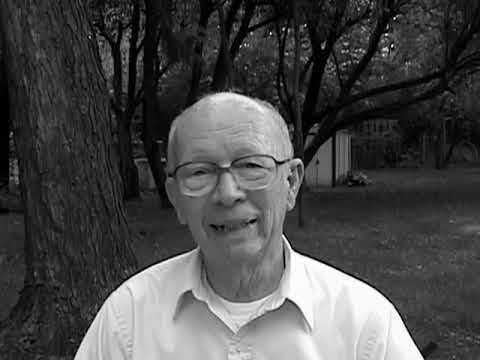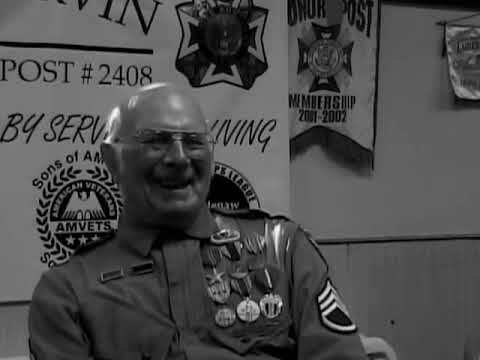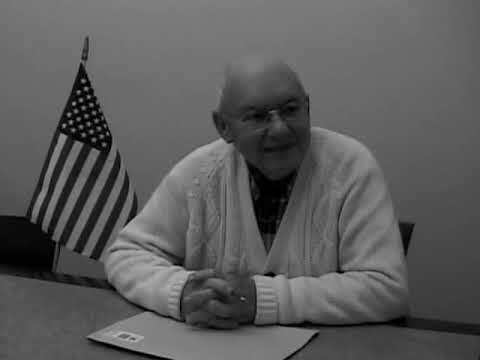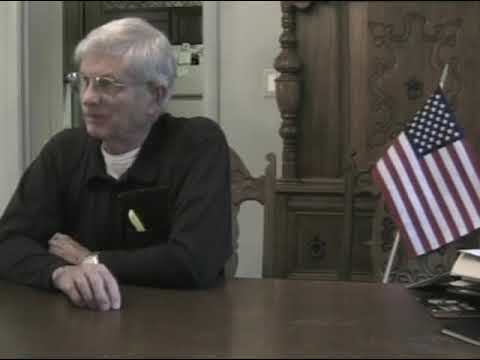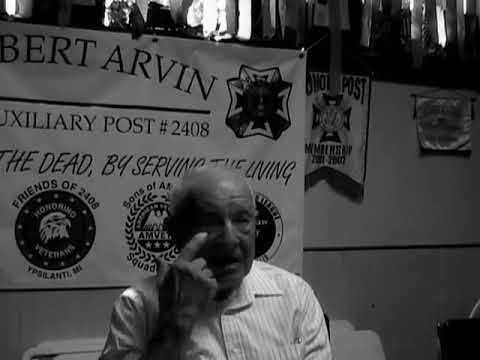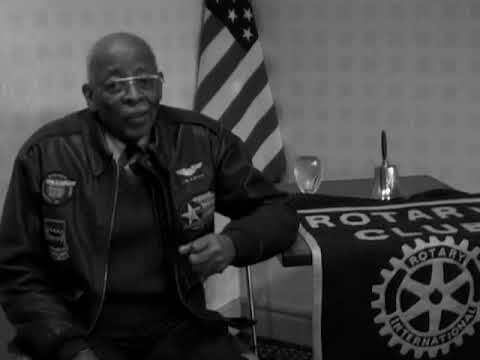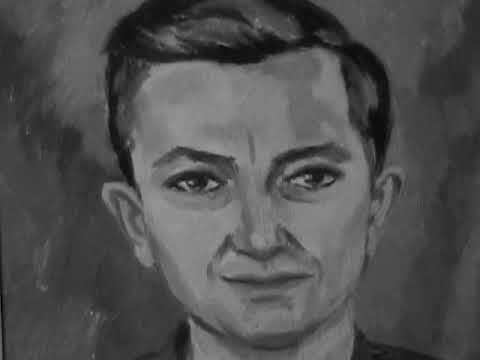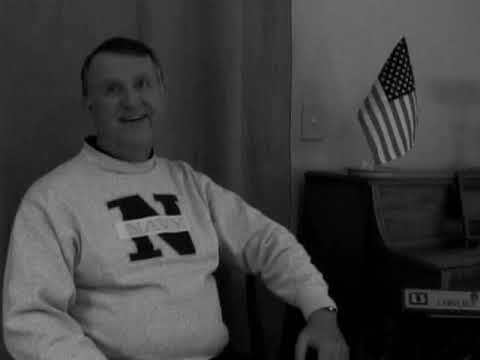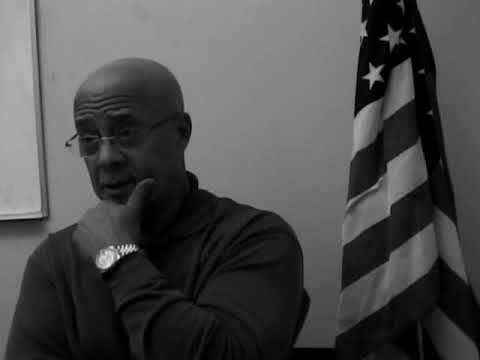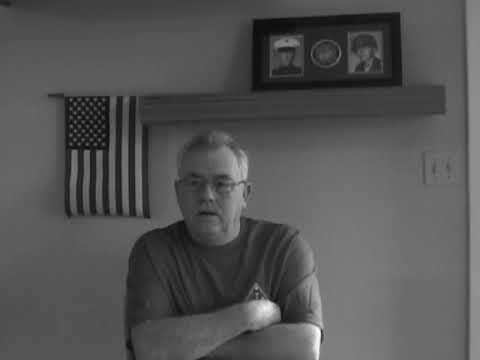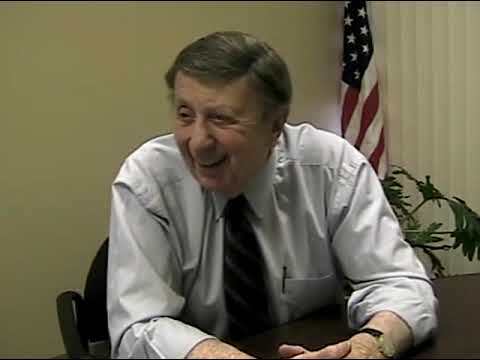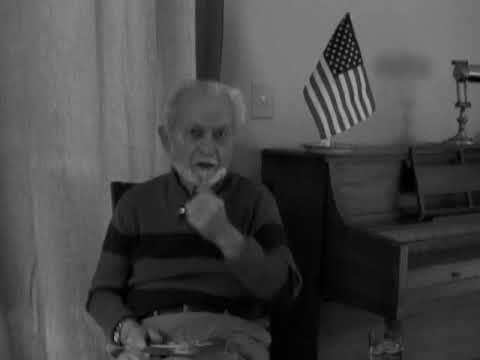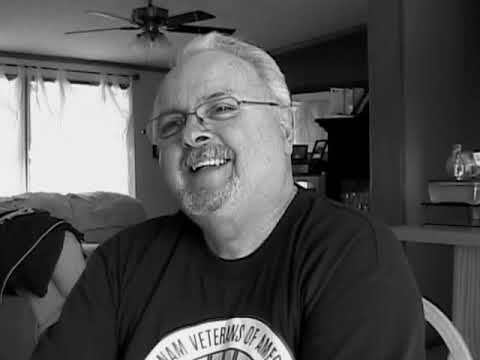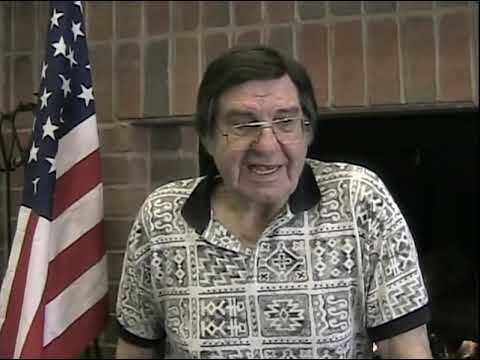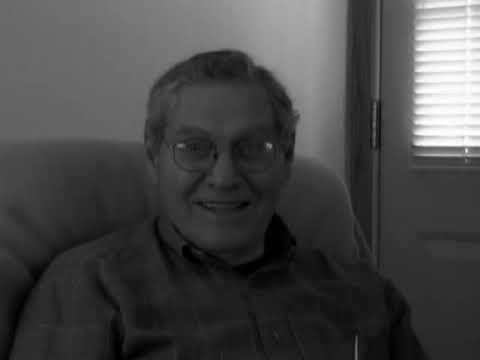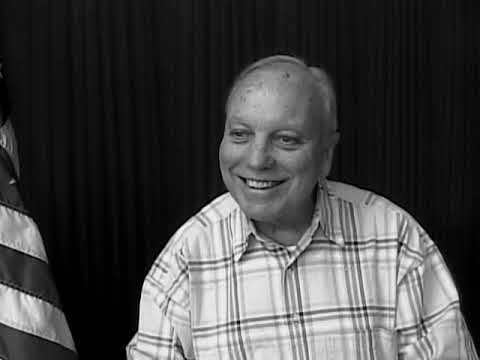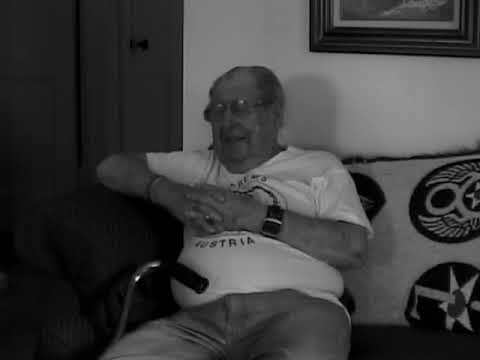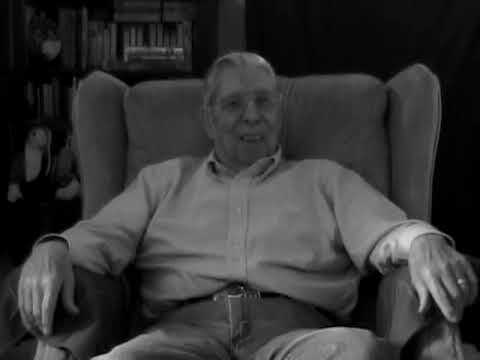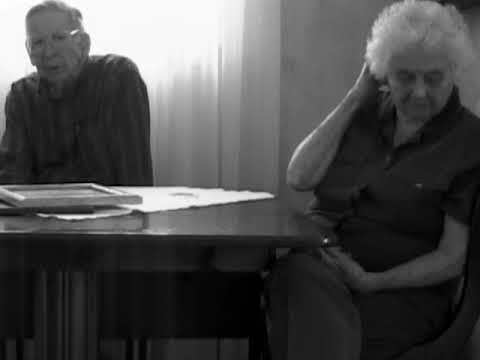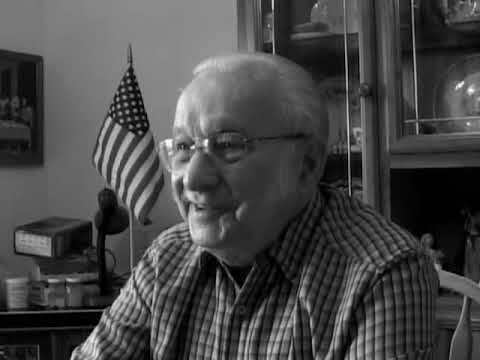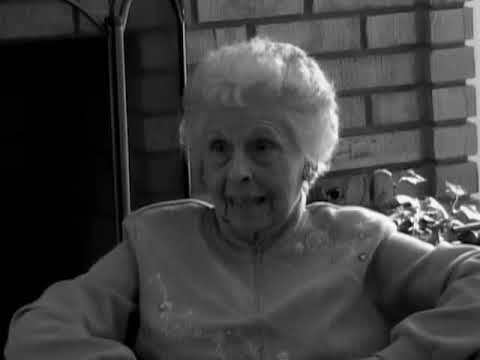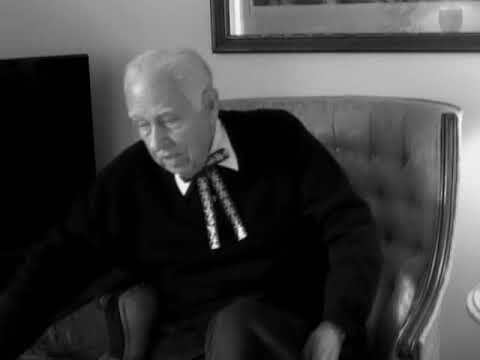Veterans History Project
- Title
- Veterans History Project
- Description
- This collection contains oral histories with Ypsilanti and Washtenaw County veterans collected by the Ypsilanti District Library, Ypsilanti Rotary, and the Eastern Michigan University Archives for the Veterans History Project. The VHP is part of the Library of Congress American Folklife Center which aims to document, preserve, and make accessible the stories of veterans from World War I on. Interviews with local veterans are housed at the Eastern Michigan University Archives in addition to the LOC. Oral histories continue to be processed by the American Folklife Center and the collection is updated regularly.
- Creator
- Ypsilanti District Library, Ypsilanti Rotary, Eastern Michigan University Archives
- Publisher
- Eastern Michigan University Archives, Ypsilanti District Library, and the Library of Congress American Folklife Center.
- Identifier
- Conducted by the Ypsilanti District Library and Ypsilanti Rotary
- Conducted by the Eastern Michigan University Archives
- Rights
-
The Veterans History Project Collection includes oral histories along with documentary materials such as original letters, diaries, photographs, and memoirs. Veterans and interviewers contribute these materials to the Library for scholarly and educational purposes, retaining any copyright they may hold. Therefore, permission must be obtained before using the interview or other materials in exhibition or publication. Researchers or others who would like to make further use of these materials should contact the Veterans History Project for assistance.
As a publicly supported institution, the Library generally does not own rights to material in its collections. Therefore, it does not charge permission fees for use of such material and cannot give or deny permission to publish or otherwise distribute material in its collections. Responsibility for making an independent legal assessment of an item from the Library’s collections and for securing any necessary permissions rests with persons desiring to use the item. - Contact VHP and The American Folklife Center.
Items
-
Richard and Adele Wagner, Oral HistoryRichard Wagner was born on December 13, 1924 in Blissfield, Michigan. He attended Blissfield High School and enlisted in the Army at the end of his senior year after taking a class in aircraft identification. He left home for Fort Custer near Kalamazoo on July 9, 1943. After passing the necessary tests to join the Air Corps, he was sent down south to Miami Beach for ten weeks basic training. In October of 1943, Richard attended the Air Force College Training Department at Michigan State University. In April of 1944, he was sent to San Antonio, Texas and was trained as a bombardier-navigator for eight weeks. From there, he received flight training in San Angelo, Texas. Richard was assigned as a bombardier/assistant navigator/nose gunner in a B-24. After getting married while on commissioning leave, he was sent to Westover Field Airbase near Springfield, Massachusetts where he became acquainted with his crew and did large amounts of flying and bombing practice. After VE Day, Richard's crew was taken off shipping orders to Europe and was sent to Boise, Idaho. After rendezvousing at the Golding Gate Bridge in San Francisco, California, Richard's crew flew to New Guinea where they spent ten weeks. After they arrived at Clark Airbase in the Philippines, the atomic bomb was dropped on Hiroshima, and the second on Nagasaki. Richard remembers seeing the Japanese delegation in their white planes at le Shima on their way to the signing of the peace treaty in Tokyo Bay.
-
Amherst Hale Turner, Oral HistoryAmherst Turner was born and raised in Ann Arbor, Michigan. He earned his English degree and teaching certification from the University of Michigan while also participating in the Reserve Officer Training Corps (ROTC.) In 1961, after graduating from U of M, Amherst attended basic training in Fort Benning, Georgia and was trained as an officer. After his basic training, Amherst was shipped out to Korea and joined a unit guarding the demilitarized zone between North and South Korea. Amherst did this for for 13 months and became a 2nd Lieutenant in that time. Amherst returned to Fort Benning, was promoted to Captain and eventually was transferred to a base in Florida that was to serve as the staging area for a proposed invasion of Cuba. On this base, he served as a property book officer. In 1963, Amherst left the service, still involved in the reserves, and went into manufacturing. He was married in 1969 and had two children.
-
McCrumb, Vance LeeVance joined the service right after high school. He was always fascinated with airplanes. After basic he volunteered for K-9 duty. He had to go through Air Police training and then Sentry Dog School. He was assigned to guarding B-52s in Oklahoma before being sent to Vietnam. In Vietnam, Vance patrolled the perimeter of the base with his dog, Dutch. He and Dutch went through training together. Dogs were trained to detect intruders and also Booby Traps. Sentry duty lasted all night and they were responsible for the integrity of the base. Handlers would alert the Air Police when an intruder was detected. Although Vance's unit received a Presidential Citation and an Outstanding Unit Award with the V device for Valor, he was most proud of the Good Conduct Medal. In the Air Force, a person needed good conduct for three years, which he admits was difficult. Vance had a difficult time transferring Dutch to another handler. "Not a day goes by that I don't think of Dutch." After Vietnam, Vance was again sent to Oklahoma to guard armed aircraft. Upon discharge, Vance returned to Michigan and eventually retired as a Supervisor at AT&T. Vance is married and has two children and eight grandchildren. After his retirement from AT&T, he took a job at Milan Precision. Vance is very active in the community and in Vietnam organizations.
-
McAndrew Jr., Atwood RichardsonAtwood McAndrew Jr. was born on July 2, 1920 in Ypsilanti, Michigan. In his senior year of college, Atwood enlisted in January, 1942 and was allowed to graduate in May. He was sent to Notre Dame, Indiana for indoctrination and then to Tower Hall in Chicago, Illinois for three months and came out as a line officer. Atwood was allowed home for Christmas and after New Year’s Day was sent down to Miami for training in anti-submarine tactics. He was then taken to Quebec to commission the U.S.S. Haste as a stores officer. Progress was delayed because the St. Lawrence River was frozen, but they set out for Boston after two months. Atwood returned to Miami, Florida for more schooling and after two months was sent to Norfolk, Virginia to become an anti-submarine and gunnery officer on the DE48 U.S.S. Doppler. The Doppler's job was to escort convoys made up of Liberty ships across the Atlantic to North Africa and the Mediterranean. It usually took three weeks to cross due to the speed of the Liberty ships. Atwood remembers that on their first trip they watched the film "Casablanca" and then landed in Casablanca in North Africa. Other ports in which the Doppler docked included: Tangier, Oran, Algiers, Tunis, Bizerte, Gibraltar and Palermo. The Doppler's convoys never lost a ship, distinguishing the Doppler as the first escort to not lose a ship in the Mediterranean. One event that stuck out in Atwood's memory is when the Doppler was attacked near southern France by torpedo bombers. The Doppler crew was able to shoot one bomber down. The Doppler also served as a submarine target ship in New London, Connecticut for two months. The Doppler was decommissioned at the Brooklyn Ship Yard at the end of the war. Atwood was transferred as a lieutenant serving as executive officer to the DE102 U.S.S. Thomas which served as a mother ship to a captured German U-Boat. The Thomas was involved in the Seventh Bond Tour that sailed from Norfolk, Virginia to Key West, Florida to the coast of Texas. The Thomas was decommissioned in Green Cove Springs, Florida. Atwood was mustered up to Chicago, Illinois where he was transferred to the Naval Reserve on April 13, 1946, ending his service.
-
Luher, JonJohn Luher served in the United States Army during the Vietnam War Era. He served the majority of his time in Panama.
-
Levenick, Richard LeoRichard Levenick spoke of his early memories attending high school in Michigan when WWII started in 1939. He started studying chemical engineering in college in Wisconsin when he enlisted in the Army. He was tested while in the Army and was selected for a top-secret program developing "Auto Pilot" systems for the Army Air Corp. His training was done in the middle of the night in a classroom. They were not allowed to take any materials to or from the training areas, and they had to memorize everything. Dick talked about being shipped out to England with the 18th Bomber Squadron of the 34th Bombing Corp. He was stationed in the countryside in England just north of London. He was tasked with checking the auto pilot systems before and after the bombing missions over Germany. Dick said he recalled seeing thousands of planes flying overhead on the day that D-Day began. He recalls the bombers would return and then leave many times during the initial invasion and throughout the next few days. He also remembers when the Battle of the Bulge began and also remembers V-Day quite vividly. Dick recalled that after the 100th bombing mission, the group was allowed to throw a party. He talked about how wars will always exist unless humans can "evolve" past conflict to settle disputes.
-
Laws, Richard AllynRichard Laws was born in Michigan on May 1, 1923. After high school, he became a door-to-door salesman for Awrey Bakery Co. He did so well that he bought his own truck for $880 and paid it off in the first six months on the job. Richard even helped his parents buy their house. At the time, Richard was not allowed to enlist in the military because the Government had closed enlistments. He was eventually drafted and volunteered for the Paratroopers. He was assigned to the 511th Heavy Weapons Division. Richard (he likes to be called Dick) made a total of 25 jumps and 6 of those were in combat conditions. He was in constant battle for a year and a half which included his time in Guinea, Leyte, Luzon, and Okinawa. It was in the Philippines that he lost his best buddy with whom he had planned to go into business with at the end of the War. Dick's company was assigned with the task of creating a diversionary battle in order to draw the Japanese away from Los Baños Interment Camp where 2,200 American, Australian and various other civilians were being held. It was believed that the prisoners were only days away from being executed since the Japanese were withdrawing. All prisoners were rescued without any casualties. There were a number of nuns in the Camp. When they saw the parachutes coming down, they said the "Angels were coming." Dick's unit adopted the White Angel designation for their Unit. From the Philippines, Dick's unit was shipped to Okinawa, days before the Japanese were driven out. In August, two Atomic Bombs were dropped on Japan, which convinced them to surrender. Dick was picked to put together a unit to land in Japan and prepare for the others who were to arrive later. There were some tense moments when they landed, and Dick told his group to keep the door locked when he deplaned. If there was any trouble, they were told to take off without him. Although tense and difficult because of the language barrier, the situation went well. Dick became the first American to set foot on Japanese soil. Dick became a member of General MacArthur's Honor Guard. In appreciation, the General gave him a Japanese sword and two rifles as thank you gifts, all of which he still has. Dick's citations include: Good Conduct Medal; Bronze Star with three Battle Stars; Bronze Service Arrowhead for Philippines Liberation with two Battle Stars; Victory Medal; American Theater Ribbon; Asiatic/Pacific Theater Ribbon. After service, Dick returned to Awrey. He keeps in touch with his old buddies and in June of 2004, at the age of 81, drove his pickup truck to Reno to attend a Regimental Reunion.
-
Koch, Owen R.Owen enlisted in the Marine Corps, in January 1943, because he did not want to be drafted into the army. Joining him were three friends, who all wanted to serve together. The Marines could not guarantee this, and as it turned out, each one went into a different service (Army, Navy, Army Air Force, and Marines). After enlisting, Owen took the train to San Diego for boot camp, in May 1943. He was shipped out in February, 1944, to the Marshall Islands with the 2nd battalion, 4th marine division. His company was a “joint assault signal company” that was responsible for ship-to-shore communications. He was a telephone man, who carried the wire and switchboard to set up these points, mainly for the command posts. Though radio was more widely used, the telephone was also a way in which personnel communicated between posts or ship-to-shore. One problem that service members encountered often was that their own tanks would run over and damage previously laid wire. Owen was generally on the front lines in the command post. He often laid line and operated the switchboard during combat, including combat that involved machine gun fire. One thing that he remembers the most was when he landed on the beach in 1944 next to a marine, and as he turned to ask if he was ok, he noticed the man had been decapitated. That experience drove home the reality of war. Just after that, one of the American block houses blew up, and Owen was hit by burning shrapnel, so he was taken to the medical tent. There, he was bandaged, but he refused a purple heart because the man next to him had lost a leg, and Owen didn’t think it was fair to receive an award for his own small injury, in comparison to the other soldier. He landed at night on the island of Tinian, to set up a command post. He was on switchboard duty one night until 2:00, when he was relieved. He and two others dug a foxhole to sleep in. Within five minutes of the foxhole’s completion, an artillery shell hit the tree near them. The other two men were hit, and one was killed. The man that had taken Owen’s place at the switchboard had been killed as well. The tarp was only free of scarring where the man had been laying. Owen received a Presidential Unit Citation when the 4th division took Saipan. This unit would also later take Iwo Jima, but by that time he was in the hospital. In August 1944, he became ill, and went to army hospital. Owen had Ludwig’s Angina; an inflammation of the right mandible joint. He had to have a tracheotomy, and was in the hospital from October through March, during which time he had 144 shots of penicillin. Owen then went back to the rest camp on Maui. When he came back, he and others began training for the intended invasion of Japan. The plan was to land on the first Japanese island in March 1946. The plan was cancelled after the Japanese surrender. He returned in October and was discharged on November 19th 1945. After his discharge, Owen stayed with his mother. He met a girl in 1942, prior to his service, who worked in a restaurant on State Street in Ann Arbor. They wrote to each other during the war, and she was proud that he went. They got married in 1947, had 11 children together, and are still married today. Owen worked at an optical business after the war. He started as a messenger boy delivering glasses. Owen would later open his own business, called Quarry Optical, which later became Richardson’s optical. He sold the business in 1990, and retired. Owen believes that “once a marine, always a marine”, and is a member of the Marine Corps League of Washtenaw County.
-
Kettles, Charles SeymourWhile enrolled as an undergraduate at the Michigan State Normal School (now Eastern Michigan University) in Ypsilanti, Michigan, Mr. Kettles was drafted into the United States Army in October of 1951. Commissioned as a Lieutenant after completing Army Flight School in 1953, Mr. Kettles was sent to Korea, but only after the conflict had ended. After returning to the United States, Kettles served in the Army Reserve until he volunteered for active duty service in Vietnam in 1963. In May of 1967, Kettles was directly responsible for saving the lives of 44 American soldiers who were ambushed by North Vietnamese forces. Serving a second tour of duty in 1969, Mr. Kettles returned to United States in 1970 to work with combat readiness for Army Reserve and National Guard units in Texas. Mr. Kettles was discharged from the U.S. Army in 1978, and went on to finish his degree at what was then Eastern Michigan University. Completing a master's degree at Eastern Michigan University a short time later, Kettles would come to teach at Eastern Michigan University himself and was the force behind the schools Aviation Management program. In 2016, Charles Seymour Kettles was awarded the Medal of Honor by President Barack Obama for his heroism in saving the lives of those 44 service members in May of 1967.
-
Johnson, Earl GeneGene enlisted in the Navy in 1940, at the age of 19. Living in Tennessee at the time, he was sent first to Knoxville, and then onto Norfolk, Virginia, for his basic training. He was eventually transported to Pearl Harbor in Honolulu, Hawaii, via an oil tanker, where he was assigned to the battleship West Virginia in September 1940. The West Virginia was hit several times during the bombing of Pearl Harbor, which led to its eventual sinking. When the opportunity arrived, Gene signed up for duty on the Lexington – however, it too was sunk in the Coral Sea, just weeks before the battle of Midway. He was transferred back to Norfolk, Virginia, where he was assigned to the Thomas Stone, a troop transport. Gene was transferred once again, this time to the North African Naval Headquarters, in Algiers. After the Germans were forced out of North Africa, his entire unit was transferred to Naples, Italy, where once again he worked for the transportation department. After his leave, he was assigned to the U.S.S. Columbus, where he served through the end of the war, until his enlistment was up in 1946. After leaving the Navy, Gene returned to Knoxville, Tennessee. His search for a better job brought him to Michigan in 1948, where he first worked for Packard. He then moved to Ypsilanti, where he worked at Kaiser-Frasier until it closed. Gene quickly got another job at Ford Motor Company’s Ypsilanti plant, where he worked for 30 years, until his retirement in 1982.
-
Jefferson, AlexanderAfter earning a Bachelor of Science degree from Clark College in Atlanta, Georgia, and completing several courses of graduate work in Chemistry at Howard University, in Washington, D.C., Mr. Jefferson graduated from pilot training school at Tuskegee Army Airfield in January 1944. Piloting a P-51 fighter plane with the distinctive red tail of the Tuskegee Airmen, Mr. Jefferson was shot down by German forces in August of 1944. Jefferson was a POW at several German installations until his liberation in April of 1945. After his discharge from the Army Air Corps in 1947, Mr. Jefferson would work as science teacher and later assistant principal in the city of Detroit. Due to his service as a Tuskegee Airman and his involvement in the community, Mr. Jefferson was awarded a member of the Michigan Aviation Hall of Fame.
-
Hunt, GeorgeGeorge S. Hunt was drafted into the Air Force. George entered the service at a time when the United States was very short on flying personnel. After an accelerated training program, George was sent to England. George and his crew flew several difficult missions. One involved a crash landing in England. When George was finally shot down, his plane was shot up so badly that the crew jumped out. George was captured and taken to a stalag, where he spent 14 months. Upon his discharge, George entered college and received his PhD from the University of Michigan in Wildlife. George became a Professor of Natural Resources and taught about birds, trees, and nature until his death in 1971. His history and experiences were relayed by his widow, Virginia Hunt. Although he lived only until the age of 51, he touched many lives and carried a message of being careful of our environment, and of making our land better for future generations.
-
Hill, Lawrence W.Mr. Hill attended Officer Candidate School in Newport, Rhode Island, and was commissioned as a Lieutenant in the United States Navy. Being trained as a naval scuba diver and in explosives, Mr. Hill was assigned to a naval base with nuclear facilities in Newfoundland, Canada. Considered an active duty assignment, Mr. Hill would go on to serve in Iceland, and later as an evaluator of officer candidates in Washington, D.C. Mr. Hill is quoted in the interview as being a big fan of the Navy football team. He would serve in his evaluation of officer candidates until 1968.
-
Henderson, William A.While attending Eastern Michigan University, Mr. Henderson completed his basic training requirements and upon graduation was commissioned in the United States Marine Corps as a 2nd Lieutenant. Mr. Henderson would then go on to serve for several years in Vietnam. After his discharge from the Marine Corps, Mr. Henderson worked as both a pilot for General Motors and was transferred to the United States Air Force Reserve stationed at Selfridge Air National Guard Base in Macomb County, Michigan. Upon his retirement from the Air Force Reserve, Mr. Henderson had been awarded the rank of Major General.
-
Harwell, William Earnest "Ernie"Mr. Harwell enlisted in the United States Marine Corps in 1942, as he was confident he would be drafted regardless. Initially serving as a military journalist in Washington, D.C., he was sent to the Pacific Theater to report on the Japanese surrender. In 1945, he also traveled to China to report on Japanese war crime allegations in that country. After returning to the United States and his discharge from the Marine Corps, Harwell would go on to broadcast games for the Detroit Tigers for over forty years. Known as the "Voice of the Tigers" Harwell is still honored today by the Detroit Tigers at Comerica Park in Detroit.
-
Hammond, DaveDave Hammond served in the United States Marine Corps during the Vietnam War.
-
Helen Fidler, Oral HistoryHelen is the wife of veteran John Fidler. She was born on February 9, 1921. While her husband was serving in the Air Force, she and her sister got jobs working on the B-24s, at the Willow Run Bomber Plant. They became riveters, attaching the gas tanks to the insides of the wings. One riveter would put in the rivet with a metal gun, and a riveter on the other side flattened it with a bucking bar. Once, one of the rivets put a hole in Helen’s thumb. They were paid in cash, with many two-dollar bills. Nevertheless, she wanted to work for her country and really enjoyed it. Later, in Norfolk, Virginia, she worked at a PX, and had two German prisoners of war working for her. She said that they worked really hard and were glad to be in the U.S. instead of a POW camp.
-
Eliot, Marvin "Sonny"After graduating from Wayne University (now Wayne State University) with both a bachelor's and Master of Arts degrees in Detroit, Michigan, Mr. Eliot enlisted in the United States Army Air Corps. Trained as a bomber pilot for the B-24 bomber, Eliot would be sent to England where he would fly bombing missions into Nazi-occupied Europe. Eliot was shot down by German forces, and would go on to serve 18 months as a POW. At some point the German soldiers of the installation he was assigned to became aware that Mr. Eliot was Jewish and was made to wear a star with the word "Juden" on it. Following his liberation by American forces, Eliot would return to Metro Detroit to serve as the long-time weatherman for WWJ.
-
Elbert, JosephMr. Elbert was drafted into the United States Army in 1944. After completing basic training, Mr. Elbert was sent to join Allied Forces fighting for control of the Italian Peninsula. After reaching Naples, Elbert was wounded by shrapnel fire coming from German soldiers fighting in Italy. He would later be awarded the Purple Heart for his service in Italy.
-
Driscoll, TimothyTimothy Driscoll was born on Staten Island, New York on July 5, 1945. His father was a chef, and the family moved a great deal. This resulted in Tim attending more than 20 schools before graduating from high school. Tim worked three jobs after high school, and was drafted in 1965, entering the service at Fort Lee, New Jersey. The barracks floors were so corroded that they collapsed. Since Tim had worked on floors in civilian life, he told the sergeant that he could fix them. Before long, there were ample supplies available to Tim to reconstruct the floors. Doing this kept him out of parades and exercise sessions. He was transferred to Fort Leonard Wood, where the weather was extremely cold. Here again, Tim's suggestions changed the way that things were done in the field. Instead of coffee breaks, he had suggested hot soup, which helped personnel cope with the weather. Tim completed the obstacle course so quickly that the sergeant sent him through again and again. Everyone expected to go to Vietnam and was prepared. At the very last minute, however, Tim and two others were taken off the truck. He spent the next 100 days driving officers and officials around. Tim’s training had been in radio and truck and jeep maintenance. He was an E-4 Specialist and became assigned to the 3rd Armored Division. He achieved a Marksman Award and a Good Conduct Award while in the service. Tim was eventually sent to Germany. He spent 17 tense months in Germany. He was discharged in 1967 and returned home. His division received a Presidential Citation. After leaving the service, he got married, and was living in New Jersey when the Twin Towers were destroyed. Tim's son and wife worked in and near the Towers. Both could have been killed were it not for pure luck. Tim’s job required him to travel frequently. By mistake, his wife took his car keys, and had to turn around, and return home. Tim's son was working on the 35th floor of the Towers, but at the time that the plane hit, he was in the basement getting supplies. The family moved to Connecticut, but within a few months his wife was laid off. These events convinced Tim and his family to move to Saline, Michigan, where he now lives with his wife. His daughter lives nearby with her two children.
-
Ditzhazy Sr., Joseph AndrewJoseph is from Michigan and was in the Civilian Conservation Corps (CCC), in the Upper Peninsula. He was drafted in August 1943, but the army let him finish high school before he entered the service. Joseph was sent to Fort Benning for training when he was around 20 years old. He had only 13 weeks of training before going to school at the University of Wisconsin-Madison and was there for several weeks of engineering training. Joseph failed on purpose, so that he would be able to join the army immediately, rather than after college training. He joined the 104th Howling Timberwolves at Camp Carson, in Colorado, for training until they went overseas. They trained at night and were known as “Night-Fighters.” Joseph only fought in one daylight battle while overseas. He landed in Normandy 3 months after D-Day (D-Day+90). The 104th moved through France and into Belgium. Three days later, they received orders to get ready to fight in Holland, where they fought to free the port of Antwerp. Next, the 104th crossed into Germany over the Roer/Rur River to Aachen, to assist the 1st division. Joseph was in a mortar battalion, and was a squad leader, although he was never formally recognized as such. Another squad leader didn’t like him and denied knowing him when asked. Joseph’s unit spent 195 days in constant combat with Germans. This combat took place from Holland down to Aachen, and until the war’s end. He only fought 120 of the days, because he was wounded. Shrapnel from a shell hit him, and he lay for eight hours, waiting for rescue. He was put on a train to Paris, and then to England. He woke up in a hospital in Oxford. He stayed there for three months while he recovered. He was finally sent back to the States, and he arrived in southern California, where he was discharged. After his discharge in 1946, he attended Michigan State University, and worked for GM and Chrysler, as a quality control manager. His unit, the 104th, has had a reunion every labor-day weekend since 1946.
-
Davison, Toy AlbertMr. Davison was drafted into the United States Army in March of 1943. Mr. Davison was known as a "Point Man" within the Army, it was his responsibility to be at the front or "point" of any engagement. At one point during his service in Western Europe, Mr. Davison was shot in the arm and captured by German forces. Considered a prisoner of war and injured, Davison was taken to the Stalag 2-B installation. Mr. Davison recalls in this interview the horrific conditions in which he lived for five months in German custody, and how he believed himself to have no hope. He and many of the other POW's he was with, describe how grateful they were for being liberated by American forces.
-
Collier, Thomas W.Mr. Collier initially enlisted in the United States Marine Corps in 1944, but the Second World War ended before he would see combat. Interested in officer candidate school, Mr. Collier would be accepted into the United States Army and into West Point in 1948. Serving three tours of duty in Vietnam, Collier served with both Army Special Forces and the 1st Cavalry Division. After his retirement in 1972, Mr. Collier completed his graduate studies in history, and would teach history at Eastern Michigan University and the University of Michigan for many years.
-
Clarke Jr., BenjaminBenjamin Clark was born on November 11, 1919, in Fogo, Newfoundland. He enlisted in the Army Air Force following high school. After basic and advanced training, Benjamin was assigned to the 306th Squadron "Hells Angels" as a waist gunner on a B-17. After six missions, his plane was shot down and he became a POW. Of the ten crew members, only seven survived. After his capture by the Germans, he was taken to a Stalag 17-B where he spent more than two years. Since there were spies in the camps, he was especially careful to whom he spoke. After two years in camp, all prisoners were forced to walk 800 miles to the front lines, because the Germans were trying to avoid the Russians. General Patton rescued the prisoners and informed them that "...you guys are back in the U. S. Army." Mr. Clark was discharged on September 27, 1945 and returned to Dearborn, Michigan.
-
Campbell, William J.Mr. Campbell was born in Winnipeg, Manitoba, but was an American citizen moved to the United States when he was young. Wanting to join the conflict, Mr. Campbell crossed the Detroit River to enlist in the Canadian Royal Navy. Even though he was born in Canada and was a Canadian citizen, he was often referred to as a Yankee. The veteran was given a Canadian Naval Ensign that flew over his ship during the Invasion of Normandy. During this oral history, Mr. Campbell describes several experiences he had in the North Atlantic and in the British Isles.
-
Bryan, Bruce RichardBruce Bryan was born on May 20, 1920, in Metro, South Dakota. He always knew he wanted to be a pilot and joined the Air Corps in 1941. His basic training began immediately upon joining the service. At first, Bruce was too underweight to become a pilot, but within a few weeks he gained 14 pounds, making him eligible for pilot training. Three months after he joined the Air Corps, the Japanese bombed Pearl Harbor. For the first three years of the war, Bruce remained in the United States. When he was finally sent overseas, he began flying missions over Italy. One day, his plane took two direct hits and went down. He was quickly captured, and spent the next eight months in a POW camp in northern Germany. Although the Germans allowed him to write letters, his family never received these letters, and were told he was missing in action. Bruce states that for the most part, his treatment was acceptable. One guard did "knock him around" but that was not the treatment that he usually received. In April 1945, Russian troops liberated his camp. When VE Day arrived, he was turned over to U.S. forces. In May 1946, Bruce got married. He and his wife of over 60 years live in Allen Park, Michigan.
-
Brown, Charles W.Charlie Brown entered the Service shortly after completing high school in Ann Arbor. He was working at the A&P at the time. After his Basic Training, he was sent overseas. It wasn't too long before he was involved in the Battle of the Bulge. There was a great deal of mud that the trucks that he worked with had to get through. Charlie and his group had to cut trees, so that the trucks could avoid it. There were no power saws, so everything was done by hand. At one point, Charlie was asked to drive one of the trucks, because the regular driver was not available. They hit a landmine and the truck was blown up. The two men next to him received shrapnel wounds. Three men in the back were blown out of the truck, and although they were bruised, they survived. Charlie received minor bruises. After taking a pounding from the Germans, his Colonel decided to surrender. The Colonel told the Unit that they had a choice. They could surrender to the Germans or try to find a way to escape. Charlie and a group of about 50 G.I. 's decided to try the latter. The 50 plus group spent a total of 4 days behind the German lines. During this time, the group tried to avoid detection. Charlie reported that one time he was so close to a German soldier who was looking for his buddy, that he could have tripped the German. Of course, he didn't. Another time, the exhausted group took a nap. One of the other soldiers woke Charlie, because they were in the middle of a German tank assembly area. For all 4 days, Charlie only had one candy bar to eat. When the group finally got back to the American lines, they all ate much better, but since they had not eaten for so long, the food did not stay with them. Charlie was still in Belgium when V-E Day was declared. Afterwards, they were packed up and prepared to go to the Pacific. Everyone was relieved when V-J Day was declared. He then started his trip home. While awaiting his discharge, Charlie was in Indiana, near enough to his relatives to visit. On one occasion he was taking a shortcut through a cemetery. There was an empty grave that he jumped into, to see how it felt. His cousin told him to get out. The gravestone was for CHARLE W. BROWN. He used the G.I. Bill to get an Associate’s Degree from Cleary College. He then went to work for the State of Michigan, and finally worked up to Assistant Business Manager at the local State Hospital. Charlie was married for 50 years before his wife died. His second wife was a widow after 40 years of marriage. They have been married for seven years. Charlie said that he has been married for 97 years.
-
Brinker, Douglas LaverneDouglas Brinker served in the United States Army as a truck driving during both Desert Storm and Operation Iraqi Freedom.
-
Brandt, Mary Margaret MaggieMaggie Brandt was a surgery resident in New Mexico in 1992, when she was recruited into the Army reserves. She wanted an opportunity to give back to her country. Therefore, Maggie went to officer basic training in San Antonio and was assigned as a reservist to Brook Military Hospital’s burn unit. As an army reservist, she was assigned to the 452nd combat support hospital, out of Fort McCoy. Her first deployment was to Afghanistan in 2003, where she was stationed at the air base in Bagram. While in Afghanistan, she saw little active combat. She worked with small mobile medical components, of about 30 beds. She took care of local nationals (Afghan citizens) and Americans in Afghanistan. The most common injuries were from mines. Most Americans were evacuated to Germany within 72 hours because of the better specialist care and proximity to home. The most severe and common injuries were mine-related, but Maggie also saw sniper injuries and vehicle crash injuries. She thought the Afghanistan countryside was beautiful. Maggie’s second tour of duty was in Iraq, where she was stationed in Baghdad, from May to August of 2007. She was commander of the 9th Forward Surgical team, made up of 20 staff who practiced emergency surgery. She was a part of the “90-day boots on the ground rule,” which states that doctors who land in combat zones are there for 90 days. This was implemented to allow for an easier return to practices back in the US. Prior to her arrival in Iraq, she had already spent three months in further training at Fort McCoy. They worked in Saddam’s private hospital, which had been taken over by US troops and located in the “fortified green zone” near the palace. Their building sustained indirect fire almost every day, (mortars, rockets etc.) and she described it as busy and scary. In Iraq, Maggie saw many injuries, mainly due to specific weapons, particularly IED’s (Improvised Explosive Device) and EFPs (Explosively Formed Penetrator). These weapons cause devastating injuries, and many burn injuries result from them. There has been an active burn surgeon in Baghdad since 2003, because of the injuries caused by these explosives to soldiers. The objective was to get American burn patients airlifted out within 12 hours. To do this, they would scrub and dress wounds prior to the patient’s flights to Germany. If the soldier was very sick, they would stay until they were safe to move. It was physically hard work and it was very hot. Maggie had to be very precise in her work. The first American nurse killed since Vietnam had been sent to this hospital, and Maggie took care of her. She said it was hard to take care of people you know personally. Maggie, and the physicians stationed with her were ordered to wear body armor after they first arrived, whenever they left the building. After the death of the nurse, these orders were resumed. As Maggie’s tenure as commander was ending, she was transferred to the IMA (Individual Mobilization Augmentee) in an active-duty post. This means that if the Army needs a substitute or additional physician, she is on call for the position (burn unit specialist). Maggie now works at Henry Ford Hospital, in downtown Detroit, as the associate Director of the surgical ICU, and the program director of critical care fellowship.
-
Edna L. Bauman, Oral HistoryEdna Bauman supported the war effort by working as a civilian employee in the Willow Run Bomber plant, in Ypsilanti, Michigan. She had graduated from high school and wanted to make more money than the average office worker, so she applied for jobs in industry. Edna was hired at the Willow Run plant in May 1943, when she was 23 years old, and worked on B-24 planes until August 1945. She was originally hired as a riveter, but the station of the plant where she worked did not have the type of riveting that she knew how to do, so her supervisor put her to work sound-proofing the airplanes. Because she was trained as a riveter, her supervisor offered her the higher male riveter wage to keep her on the line as a sound-proofer. Edna was the only female worker at her station, and she remembers many comic moments and always being treated fairly. During the war, many famous people visited the Willow Run plant, and Edna was present when Franklin and Eleanor Roosevelt toured the facilities. Edna was one of the last workers to be laid off after the war ended, because of her specialized sound-proofing training, in August 1945. Edna, who had been married for four months by the time she left Willow Run, remained jobless for a year and a half. She then applied for a job in Plymouth and was hired to stuff cushions on an assembly line, taking time off to have a child, but remaining employed until her retirement.
-
Aroffo, Ernest G.Ernest Aroffo attempted to enlist in 1942, but he didn’t weigh enough, and was turned away. He was drafted six months later in 1942. Ernest was sent to Fort Custer for training in October 1942 and stayed there for two years at the request of his superiors. In 1944, he was sent to Fort Sheridan for more training, and then to the field hospital group at Camp Grant in Illinois. His last stop in the US was in Raleigh, North Carolina, where he was promoted to 1st Sergeant of the 1st platoon. As 1st Sergeant of the 1st platoon, he had control of duties in the ranks. He and his others arrived at the Normandy beaches in October 1944 after D-day. Ernest later described his experience arriving on the beach after the battle. His mobile hospital unit was 29 men, with two nurses and two doctors. Their job was to work with the 3rd Army and keep up with them, and to perform medical services, mainly surgery. Ernest’s unit traveled with two jeeps, a two & one-half ton truck and an ambulance, while the 3rd Army was mostly a mechanized division. From France, they traveled through Belgium and Luxembourg, staying for about three days each. Eventually, his unit and the 3rd Army would enter Germany and visit cities like Metz and Nuremberg. The mobile unit mainly worked within cities, using ambulances to transport those in need of treatment (from the field and those within the cities). They were within 15 minutes of conflict, so they had access to the wounded. His unit later entered a concentration camp and was assigned to delouse the detainees. He described to listeners what he saw, including the barracks and the victims. Ernest’s last stop was Nuremberg. and he later described to listeners the two hospital buildings he worked in, and the patients he saw. While in Germany with the 3rd Army, he volunteered to rescue an injured man in a snow-covered minefield. He successfully brought this man back to the medical unit. Ernest was twice given a bronze star for his heroism. The first was from General Patton, who at the time was not a full 4-star General, and thus without the proper authority to award the star. So, a second General, who was a 4-star, awarded Ernest a second bronze star later. He kept a memorandum while overseas documenting the experiences he had. His old platoon now meets as a veteran’s group.
-
Angerer, Russell H.Russell trained at Fort Knox, Fort Polk, and Fort Benning before being sent to Vietnam. He was a squad leader and went out on numerous patrols. For most of his tour of duty, his squad was fighting the VC, except for one soldier in a Chinese uniform that they killed, which was unsettling. Russell was wounded after only three months in Vietnam. He was shot in the stomach but fortunately his belt buckle took most of the impact. Russell was operated on, losing a kidney as well as other internal organs. He was awarded for Valor; having gone out into a situation that he was not required to go on. Russell has an 80% pay for disability from the Army. When he returned, he got married and had five children. He returned to work at GM. One incident that he mentioned happened when a supervisor had a heart attack and died near him. This triggered PTSD because it brought him back to his Vietnam experiences. Nevertheless, Russell has a very positive attitude about his Army experiences.


